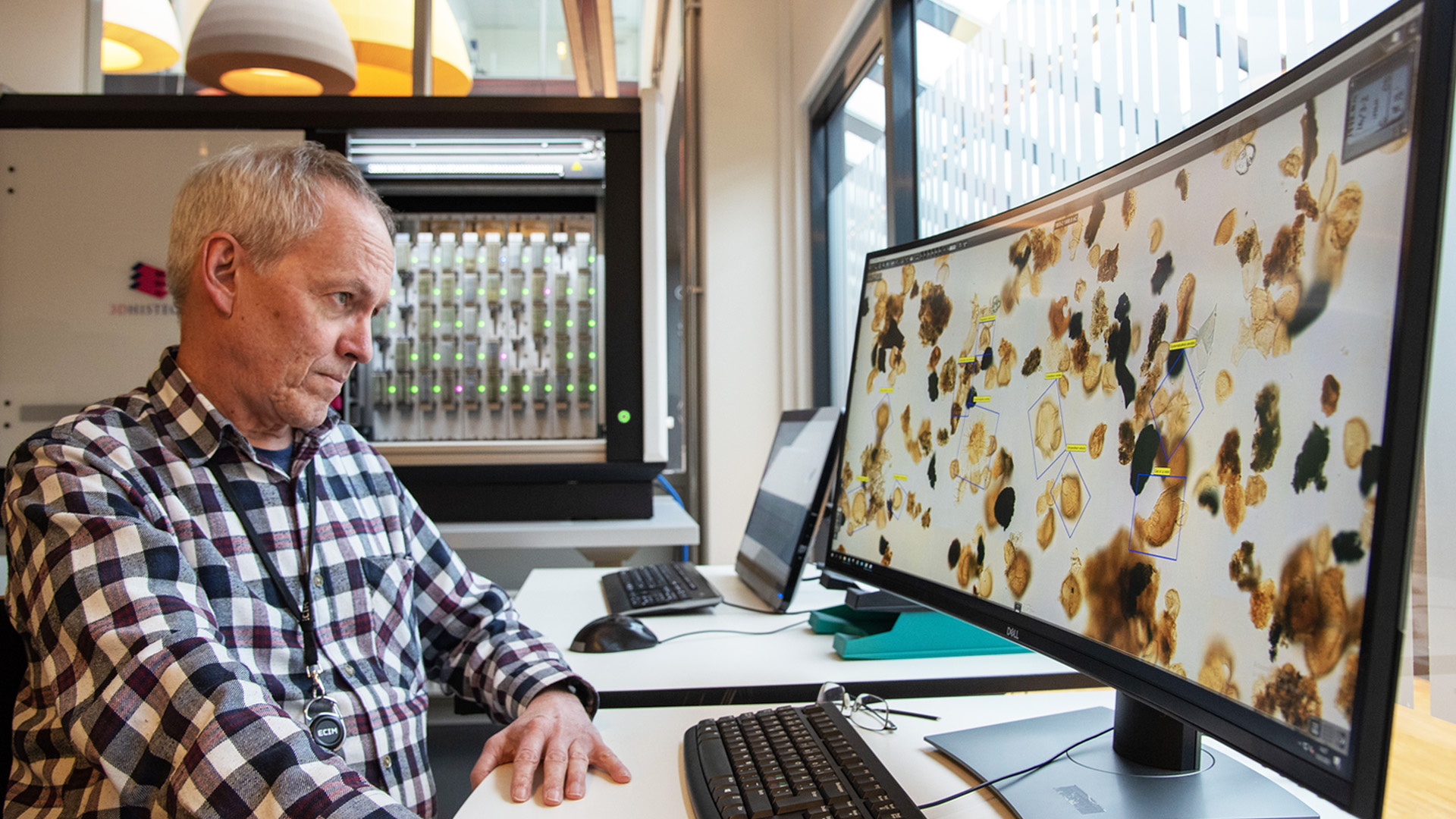New Diskos data type: multi-gigapixel palynology slides

Geologist Robert W. Williams identifies and annotates fossil microplankton on a digital palynology slide. Behind him is the machine that digitises the Norwegian Petroleum Directorate’s vast archive of microplankton, pollen and spores from exploration and production wells on the continental shelf. Picture: Arne Bjørøen
3/13/2023 The Norwegian Petroleum Directorate's digitalisation project Avatara-p has produced over thirty thousand digital palynological slides from 284 released wells. This expanding dataset of 57 terabytes is now available in Diskos.
Diskos is a shared solution for storing and distributing seismic data, well data and production data from the Norwegian shelf. The database was first launched in 1995 as a cooperative effort between the NPD, Statoil, Norsk Hydro and Saga Petroleum.
Each microscope slide is reproduced with over seven gigapixels. The NPD has established the world's first public archive of digital palynological preparations.
Palynology deals with microfossils that consist of biopolymers of hydrogen, carbon and oxygen, - in other words, nature's microplastics.
Based on taxonomy
Like all fields of palaeontology, palynology is based on taxonomy, - identifying small fossils to species level based on differences of both gross and fine structures. This science appeals to geologists who specialize in recognizing patterns and morphology among large numbers of complex forms. Palynologists use painstaking, meticulous and detailed analysis through a microscope. They identify and count thousands of specimens of thousands of species recovered from thousands of well samples. They reduce this colossal complexity to three essential observations: the age of the deposit, the depositional environment and the presence of older, reworked deposits.
Four hundred million years of deposits on the continental shelf have left an enormous archive of microplankton, pollen and spores that shed light on Norway's geological, geographical and environmental history.
Collaboration with medical expertise
Palynological analysis is labour-intensive and time-consuming. Optical design and imaging technology have greatly improved, but microscopy has remained unchanged for four centuries.
Through collaboration with medical expertise in Finland, the NPD gained insight into the technological progress that pathology, haematology and cytology have been driving forward for almost thirty years. Research and development with a goal to augment medical diagnosis of digital tissue samples proved to be applicable also to palynological issues.
Palynologists have increased our knowledge of long timespans of Norway's geological history over fifty years with countless analyses of microplankton, pollen and spores. Augmented analysis through machine learning will potentially uncover even more aspects of Norway's deep history.
Director Communication, public affairs and emergency response
Updated: 3/15/2023